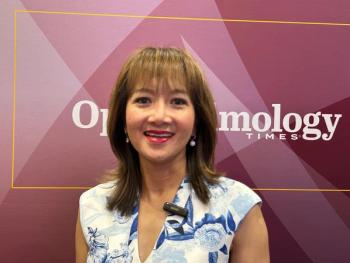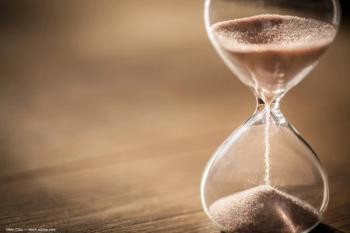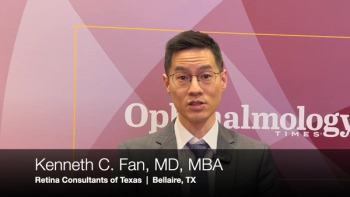
Bringing the ‘wow’ factor back to LASIK
How technology improvements, better communication with patients can re-invigorate the market
Take-home
With a combination of femtosecond laser flap and an ocular lens, more than 50% of patients (versus 17% without the shielding lens) see 20/20 immediately after surgery, relates one ophthalmologist.
By Sandy T. Feldman, MD, MS, Special to Ophthalmology Times
The decline in procedure volumes of laser vision correction (LVC) is well documented over the past few years. Economic changes, a sluggish recovery, and what some would describe as LASIK “fatigue” have played a large role.
Refractive surgeons know that LVC outcomes are almost uniformly excellent. However, too often, we fail to share that with patients and other health-care professionals in our communities. The same goes for collective staff.
But there is more than just the economy to blame-and it will take more than a resurgent economy to bring LASIK volumes back to pre-recession levels.
Complacency is another major factor in the dip in procedure volumes. With excimer laser systems, custom ablation, and even femtosecond laser flaps being old news, refractive surgery can seem so routine that it feels like there isn’t much to talk about. But even without the introduction of paradigm-changing technology, we have seen real advancements in the past few years-advancements that are improving outcomes and giving patients that “wow” factor.
Additionally, the population of candidates for LVC is constantly changing. Every year, millions of patients with ametropia become receptive to the message about what LVC can do for them-either because they have recently become contact lens-intolerant, or because they have just reached an income level that can support elective procedures. If we don’t keep talking about it, these candidates will never hear the message.
Most importantly, a 28-year-old patient with myopia today has the same fears that people did in the 1990s: Will it hurt? What if I lose my vision? Can I afford this? Refractive surgery has matured considerably. Those fears are less well founded today than they were a generation ago, but today’s patients don’t know that.
New technology
For some time now, we have been achieving excellent refractive results. The vast majority of patients see 20/20 or better uncorrected visual acuity after LASIK or PRK, with many seeing better than they did with glasses before surgery.
In my practice, two new technologies have recently made a big difference in how patients subjectively experience the procedure. The first is the femtosecond laser (iFS, Abbott Medical Optics). I originally delayed upgrading from its predecessor (FS60 femtosecond laser), because I was skeptical that results could actually get much better. In fact, I have seen a huge qualitative improvement in day 1 results.
The faster femtosecond laser creates a smoother stromal bed that provides a fine surface for the ablation, and the beveled, reverse-angled flap edge fits precisely back into the bed with almost no gutter.
This makes a difference in how quickly the cornea heals and re-epithelializes. The typical time to create a flap has decreased from about 15 seconds to 10 seconds. While this might not sound like much, when combined with easier docking, it means that the eye is subjected to high pressure for a much shorter period. That reduces the surgeon’s stress and limits anxiety and discomfort for patients. From their perspective, the faster you can get through that part of the procedure, the better. That means a better patient experience.
The second technology is a unique ocular lens (Nexis Lens, Nexis Vision). We have begun placing the lens on the eye for 4 hours or overnight after surgery. The lens is similar to a contact lens. However, unlike a typical bandage lens, the lens is thicker and fits more tightly so that it does not move around with blinking.
In lieu of goggles, the lens shields the cornea but also promotes healing by minimizing edema and encouraging dehydration. The lens also provides a scaffold for smoother epithelial regrowth and provides clear optics for faster functional recovery of vision.
Surgeons are accustomed to reporting and focusing on visual results 1 month or 1 year after surgery. But it is important to remember that patients universally fear losing their vision, so excellent vision right away is tremendously reassuring. With this combination of femtosecond laser flap and ocular lens, more than 50% of our patients (versus 17% without the shield) see 20/20 immediately after surgery.
Almost 90% of patients see 20/25 or better immediately after surgery. This goes a long way toward quieting the voices in their heads saying, “What if this is as good as it gets?”
These new technologies enhance the patient experience and bring patients better vision and less discomfort in the first few hours after surgery. That is a huge “wow” for the patient, and a win for the practice. It allows us to let patients alert their social media network about the ease of LASIK and how amazing their vision is immediately after surgery.
Speed of visual recovery study
In a study with Dan Durrie, MD, Steve Slade, MD, and Karl Stonecipher, MD, we measured visual acuity immediately after surgery, at 30 minutes, and 1, 2, and 4 hours, as detailed in Table 1. We also asked patients whether they would feel comfortable texting or driving. These are common visual activities that serve as good indicators of patients’ subjective comfort and clarity of vision after surgery.
The results of this study, which enrolled 100 subjects undergoing wavefront-guided LASIK (43 with the Nexis shield and 57 without it), have been very impressive.
The majority in both groups said they were able to text on their smartphones immediately after surgery. The Nexis lens group had an edge over the non-lens group for about 4 hours after surgery. Not surprisingly, patients are less confident about their ability to drive immediately after surgery. About 60% of those with the lens said they were ready to drive as early as 1 hour after surgery, significantly more than those without the lens.
These results raise the question of whether patients could have LASIK and drive themselves home or return to work the same day. While we have not changed our guidance to patients about working and driving, we have stopped advising them they need to go home and take a nap. The purpose of the nap was to get them through the worst of the discomfort and blurry vision-something most patients aren’t experiencing any longer.
LASIK is a fantastic procedure already, but technology improvements can help resolve patient fears and decrease discomfort in the early postoperative period. This is a good time to remind refractive surgeons how important it is not to become complacent but to continue to share the joy of LVC with potential candidates and community referral sources.
Anything we can do to bring the “wow” back to LASIK-both in terms of the patient experience and in how we communicate that experience-will help re-build procedure volumes.
Sandy T. Feldman, MD, MS, is medical director of ClearView Eye & Laser Medical Center, San Diego, CA. Readers may contact her at 858/452-3937 or
Newsletter
Don’t miss out—get Ophthalmology Times updates on the latest clinical advancements and expert interviews, straight to your inbox.



















































.png)


